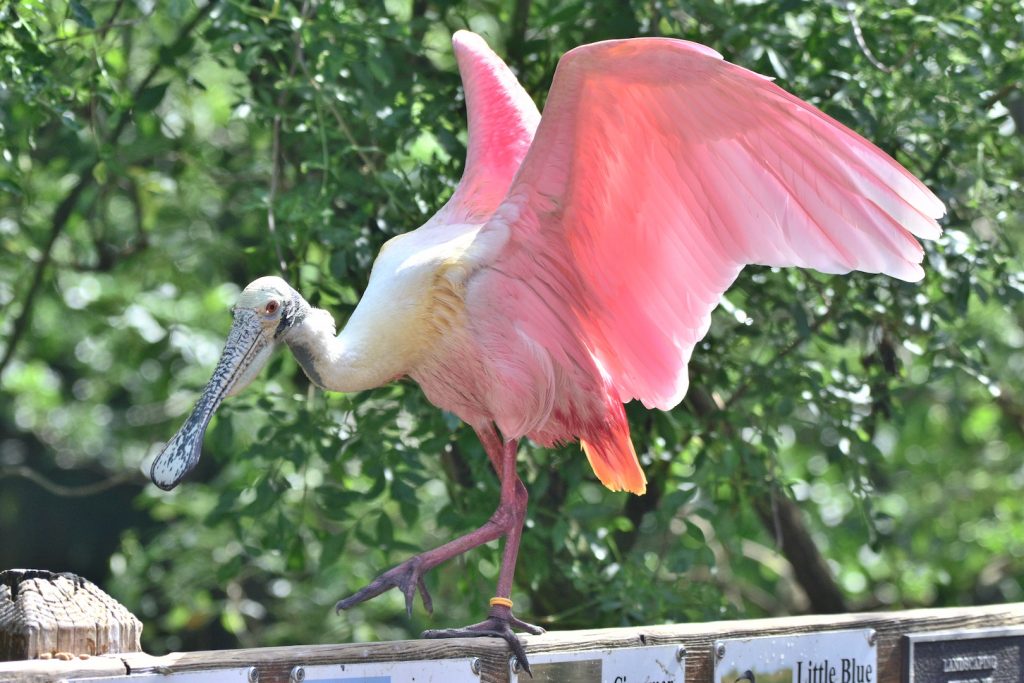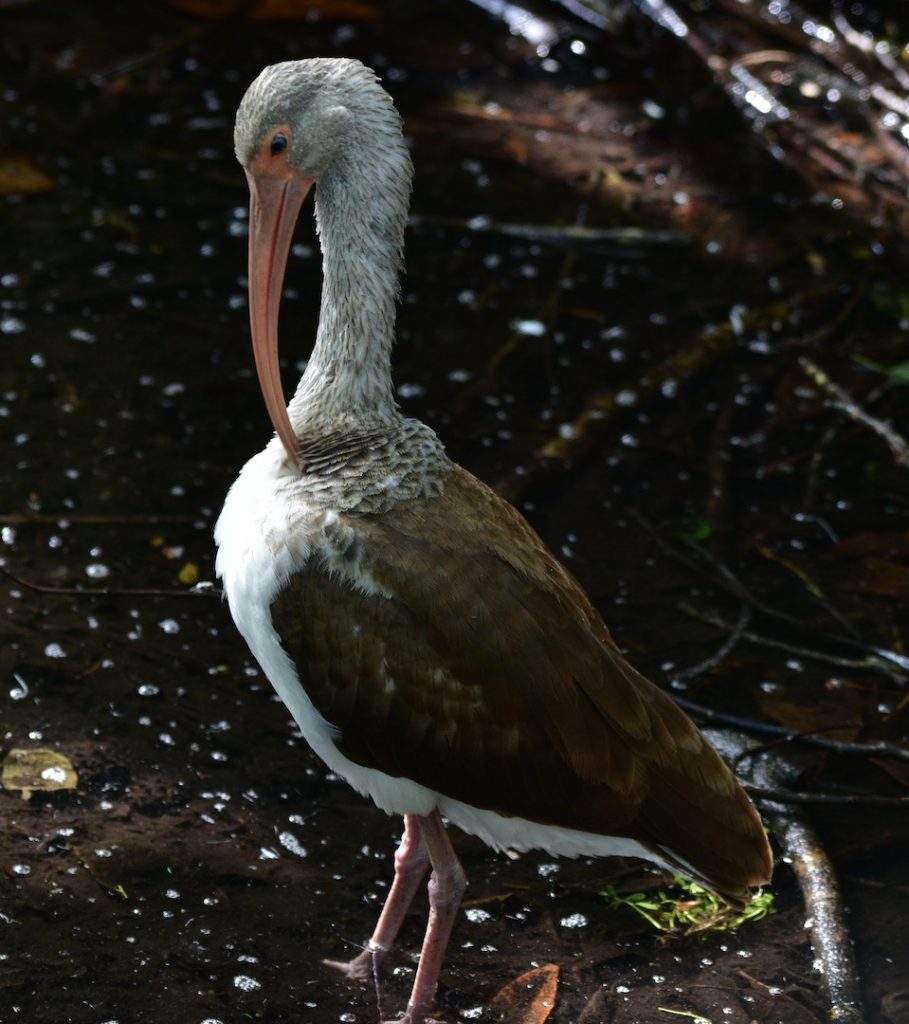4/1/2018 Sunday, Easter Sunday and April Fool’s Day
We sleep in until 8 and finally force ourselves to go to McDonald’s where there is a new kiosk customers can use to place their orders. There is nobody behind the counter and the only visible worker is standing next to the new kiosk. As she takes our order and demonstrates how it works—which is not quickly, because it takes lots of clicks to order any one item, and more clicks to find another item—she comes to realize that one cannot add an Equal to a latte via the new gadget. She completes our order at the counter, and while we wait for our order, the young lady returns to the kiosk where the man behind us says, “If you make me order there, we’re going to leave. I want to eat as fast as possible and that thing is ridiculously slow.”
I laughed out loud.
As we eat, I mention maybe doing a nature hike, and that Homossassa Springs is only a few miles away. We find an empty parking lot there, and it’s only as we walk across the road to the entrance that it occurs to me that it’s Easter Sunday. We’re in long-sleeve shirts, sweatshirts, lightweight pants and comfy shoes, and feeling pretty happy. After paying our $13 per person entry fee, we learn that the manatee named Rosie that we’d seen being treated in a special tank when we were last there in 1995, had lived to be 50 years old. There is a small stained glass likeness of her with “Rosie” on it near the door, with the year of her birth and passing. It was great to know her treatment had kept her going many more years after we’d last seen her.
We spend several hours walking around, photographing birds, most of which had been wounded, but also numerous birds nesting nearby and coming and going on their own. Amongst the wild birds, I photograph: my first gray catbird, which flits amongst the vegetation.
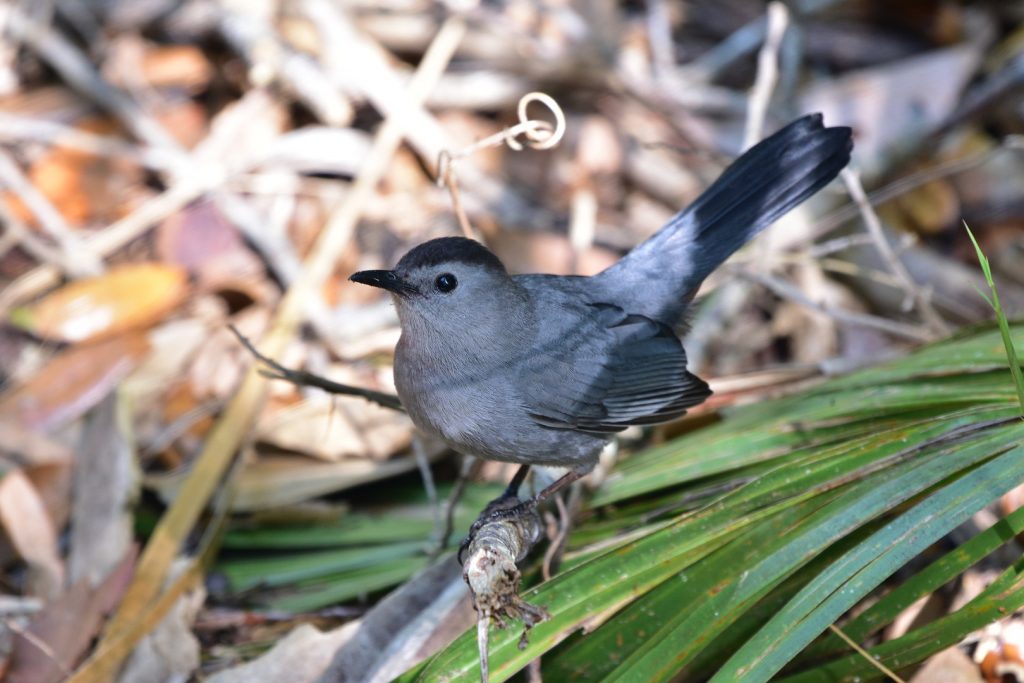
We quickly learn that being at the Park first thing in the morning has its advantages, because we soon see a caretaker feeding the deer…and the sandhill cranes. Who knew they hung out together?
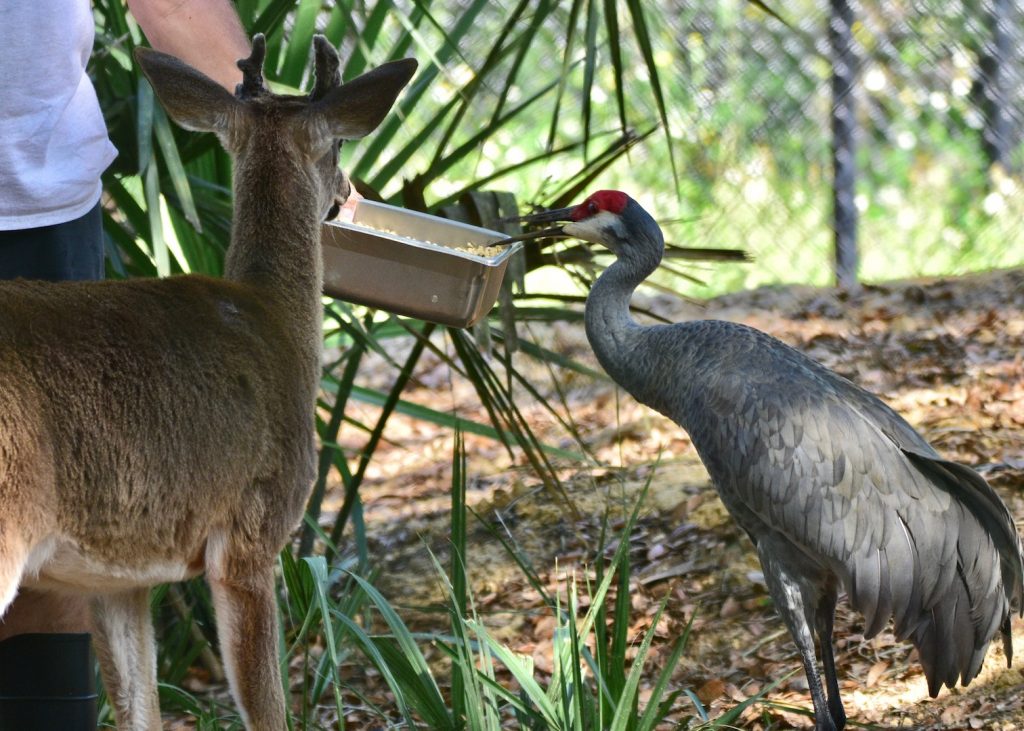
The caretaker took a moment to take special care of the deer.
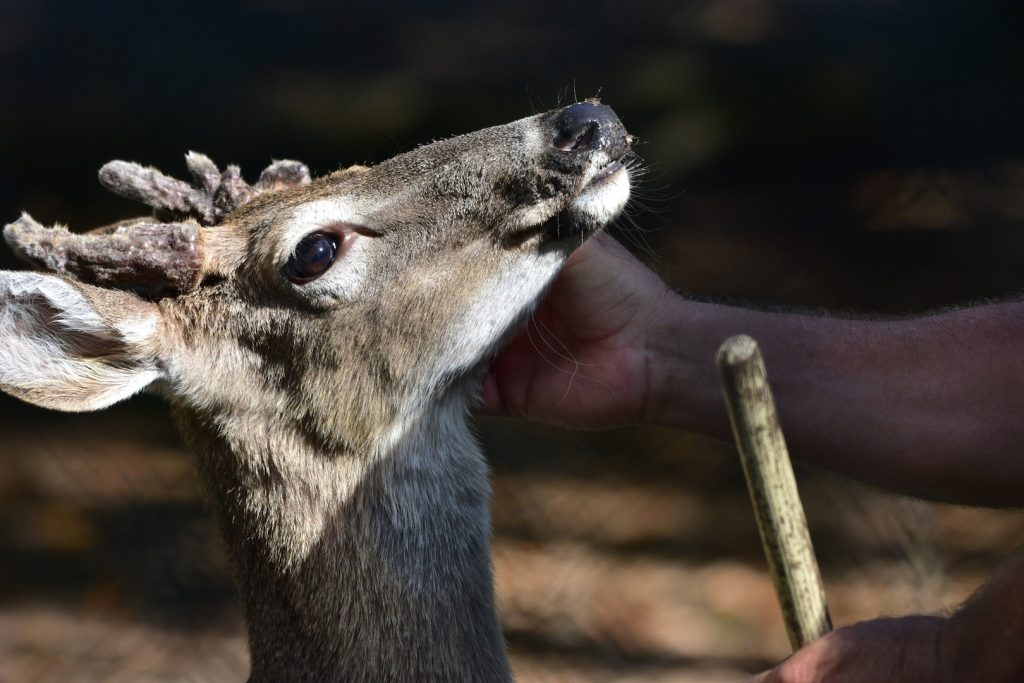
After capturing some tender moments with the deer, we see a pond with lots of pelicans, including this fella.
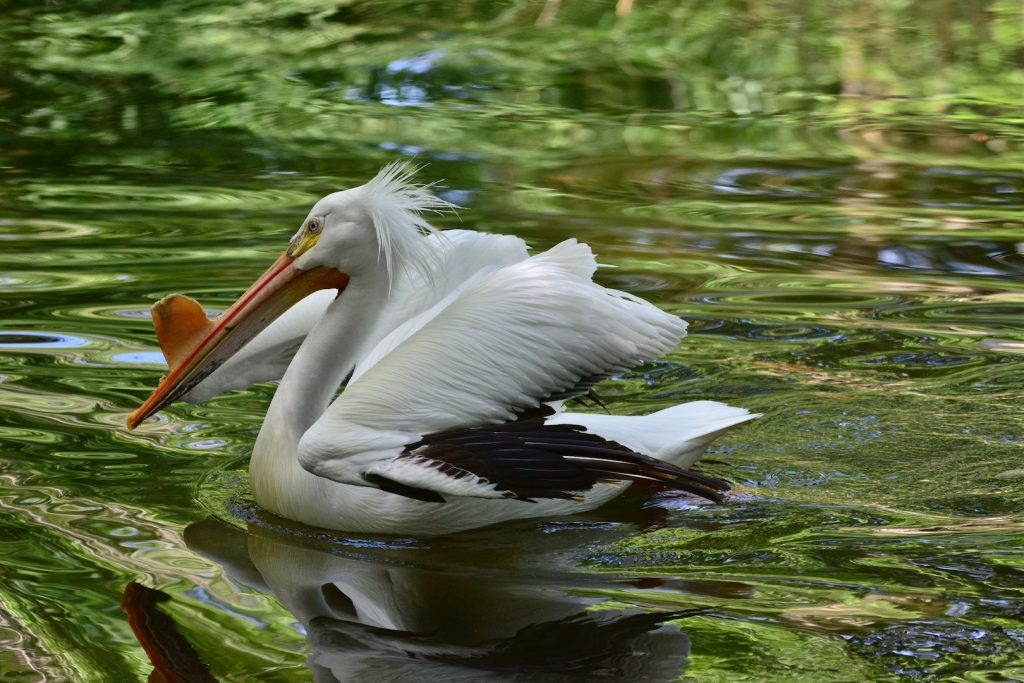
In the shadows of the trees we find this brown pelican.

The next pelican we see is in a nesting area created just for pelicans.

In an area separated from the pelicans are several roseate spoonbills, a species nearly wiped out in the 1860s because hunters sold their wings as fans to tourists.
A close-up, head-on shot provides a good view of its spoon-shaped bill.

Nearby, are areas for birds that aren’t in an enclosure, making me pause to wonder if they could fly in to say hi to a fellow bird pal and fly off again.

The white ibis is near a shallow pond that holds numerous flamingoes, including this fella.
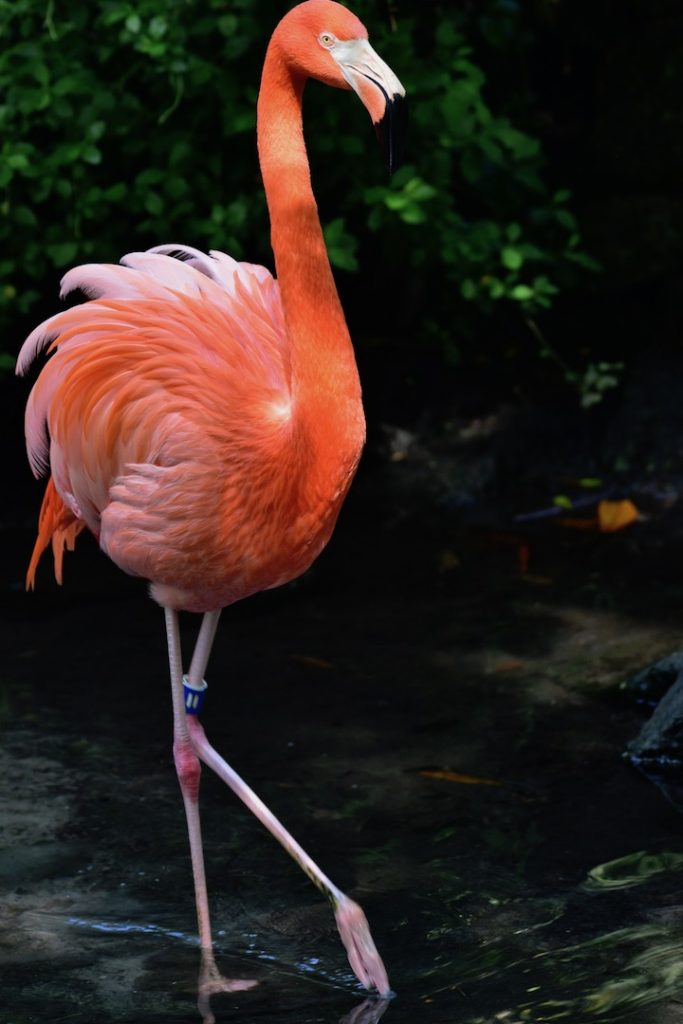
The bird below is a black-crowned night heron…which I saw during the day. Because they usually hunt at night, Audubon said it’s hard to get an accurate count of their population.
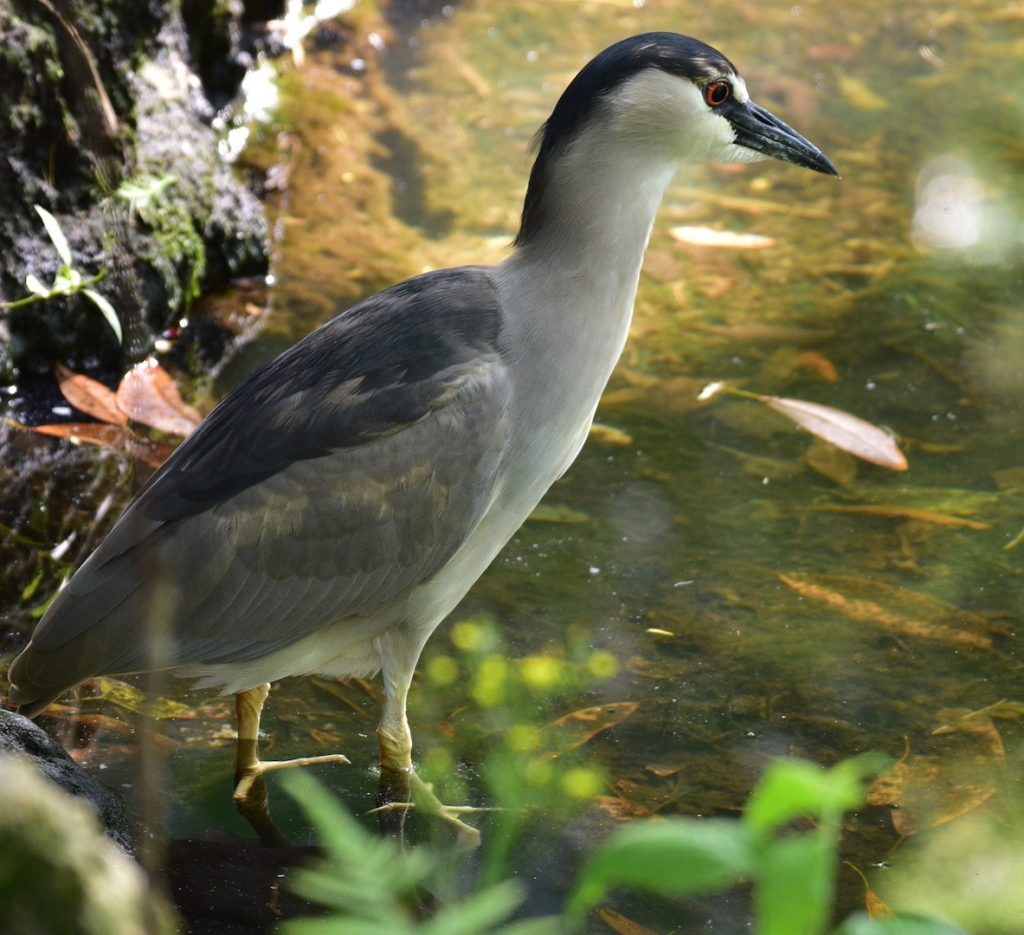
Nearby, was an egret.
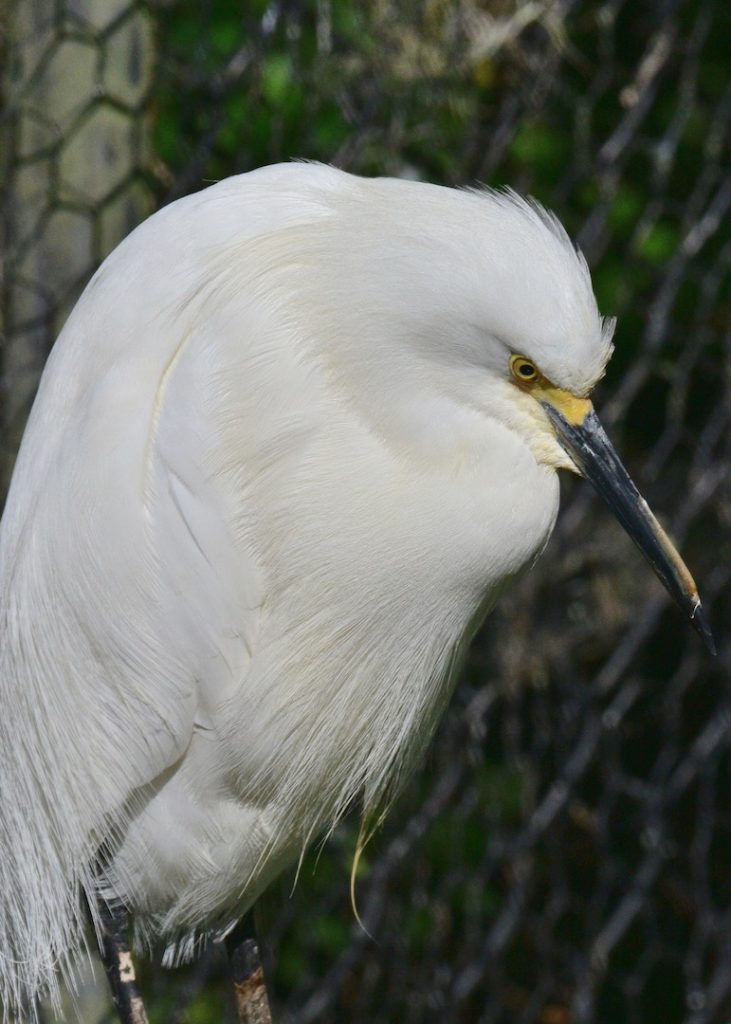
Amongst the injured and never to be released are several bald eagles, several types of owls, and wood storks.

As I photograph the stork above, two wild storks fly by overhead. I wonder if the flightless bird notices.
In the same area are whooping cranes. According to the Florida Fish and Wildlife Conservation Commission: “The world’s whooping crane population has gradually increased from a low of 22 birds in 1941 to 503 birds in spring 2009. Always rare, the whooping crane population may never have exceeded 10,000.”

We see sandhill cranes in Michigan in the spring and fall primarily, but I never saw a crane’s hole-y beak up close.

This caracara never came fully into view for me, however, focusing on its head helped me appreciate its coloration.
We also saw one of these birds, which I think is a white ibis, first summer.
At the tree tops are nests of wild birds. One young bird seems to be letting the adult know it should be paying more attention to it.

We leave the birds to seek furry creatures and find an otter playing…or so it seems. The otter repeats a circular path to the fence, upside down under an artificial structure, to another point, turns around, and repeats the path again…and again.
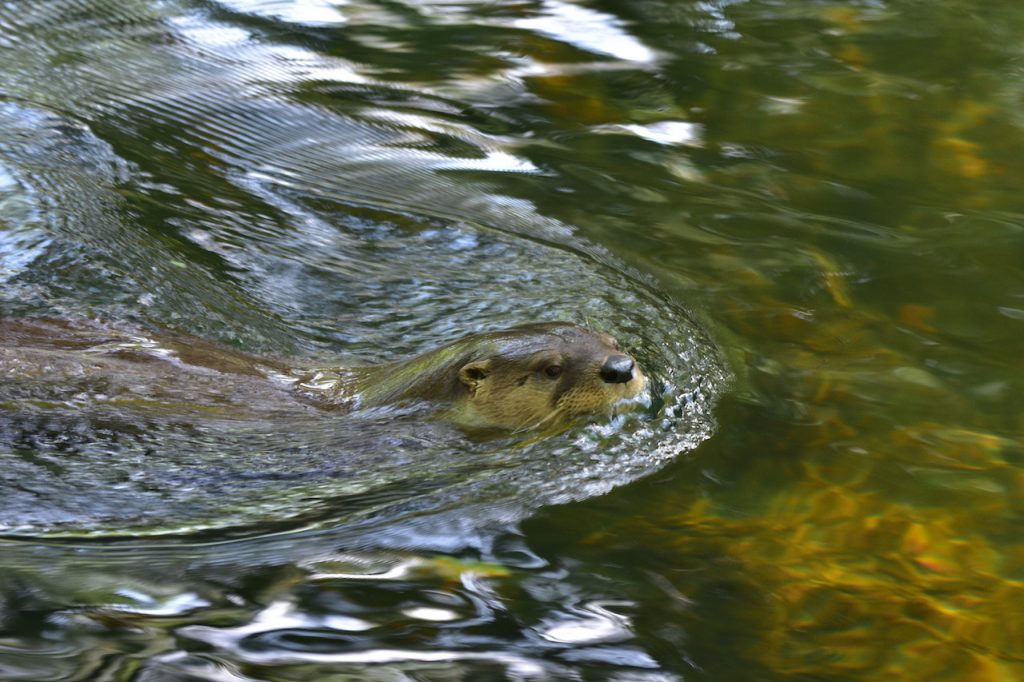
The ones that disturb me and make me realize this is, after all, really much like a zoo, are the foxes—trotting back and forth along the fence line, back and forth, back and forth.
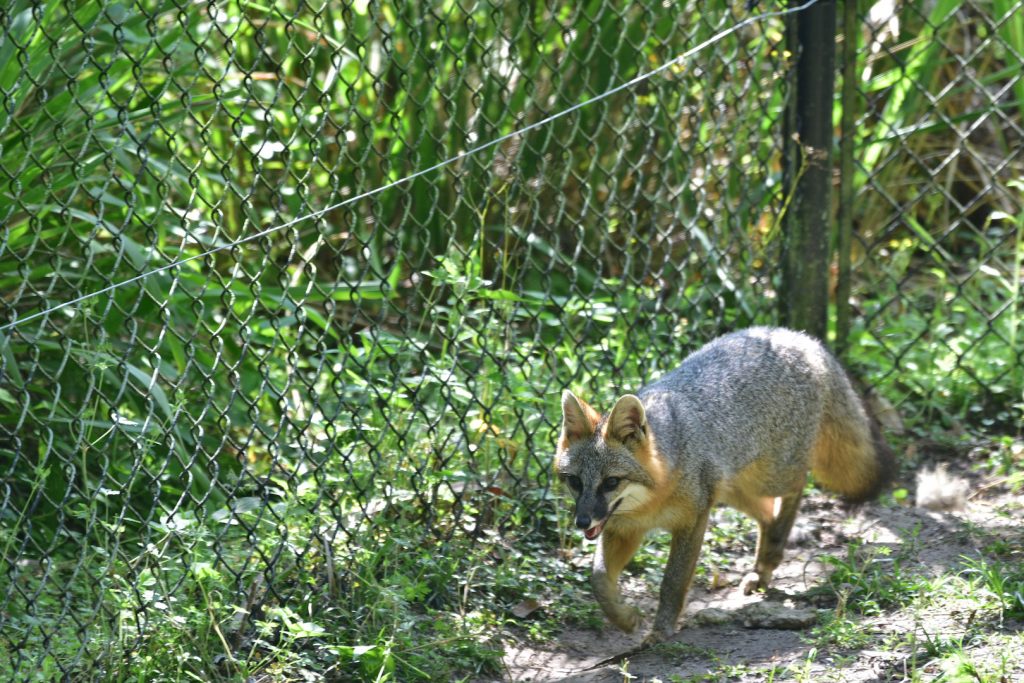
Two rescued baby manatees are in a watery cage together; one is poking around the fencing as if trying to solve a puzzle; the other is swimming in a pretty constant pattern but mostly upside down, as if he, too, didn’t mind where he is.
The highlight of the day is going to the above-ground and underwater viewing platform and watching a big, fat manatee come towards us. It’s the only adult, free-swimming manatee we see in the large pond and it comes right up to the platform where several black and white fish pick at its skin. I take some photos from the underwater part of the platform, and as I run upstairs, Mark takes THE photo–of the manatee face-to-face at the glass, as if saying hello to Mark.
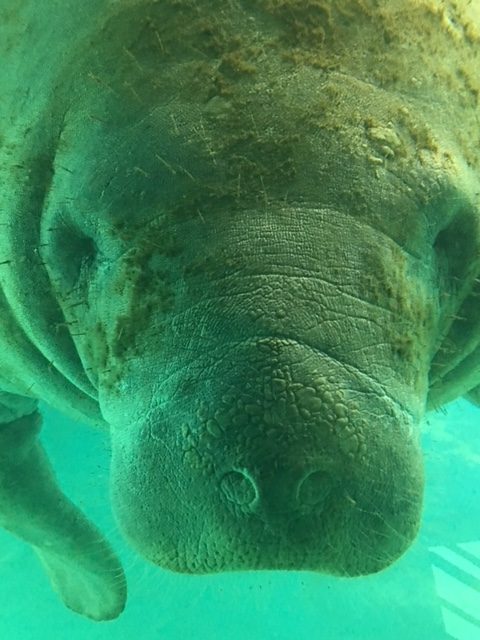
Meanwhile, I got a great photo of its nostrils.

It is hot by the time we return to the parking lot, which has about 30 cars in it but a lot fewer than on previous visits. We return to a ppb&j lunch in the room and I realize it’s our last day…and I’m antsy. When I look out and see only two boats at Kings Spring I suggest maybe we go look for manatees again, that perhaps with all the good people at church, perhaps it won’t be so frothy.
We get into our suits and wetsuits again, walk to rent a kayak again, only to find that Captain Mike’s is closed. I am bugged by the fact that there’s nobody on the water, so we drive to Hunter Springs, which is bustling with people. One guy is unloading a bunch of kayaks and there is not a single open spot in the small parking lot. We swing into the entrance at Three Sisters Springs which allows no water entry and no on-site parking, yet costs like $7 per person. We chat with the young man at the gate who, after chatting for several minutes about the legality of us snorkeling across the channel by our room to Kings Springs, suggests we go to the nearby Marine store and purchase a dive flag of our own. One marine store is right around the corner, and inside we find exactly one dive flag attached to a float. We buy it, go back to our room, get into the murky water and snorkel our way across the open water to the buoys. We both encounter a manatee amidst what is now a circus of people kicking around in search of them. Amongst the noodle mongers is one dive master in a wetsuit, who yells out, “Ma’m, oh ma’m!” I look up and he says, “Please don’t use your fins on top of the water. It scares manatees.” To which I said, “And having 20 people kicking their feet and pushing noodles around doesn’t?”
I use my fins to kick sideways like a frog and continue on my way.
I wait in the shallows for Mark as he continues to have an encounter with a manatee about 50 feet away. He appears by my side, we look left and then right, and begin kicking with our fins and dragging our dive flag and float behind me, across the water to the motel. We are in open water and are headed to the seawall outside our motel. I look up several times in the pea-soup-like water and then decide to make a final kick for shore. I hold onto Mark’s wetsuit and look up one more time, only to see the back end of a pontoon boat whose driver clearly didn’t see us and clearly—until he looked back and saw me behind his boat—had no idea we were in the water. I swallow hard—nearly slurping in my snorkel mouth piece—before kicking into the murky shallows. I’m nearly hyperventilating as I pull my mask off and sit in the water looking around. Only later do I mention to Mark how close that boat really had been.
I’m pretty wound up the rest of the day in spite of my exercise, and find myself walking around looking for my lizard friends.

I walk around around the small neighborhood nearby and stumble upon my second ever thrasher.

I also see this orange-crowned warbler.

After being snubbed by an uncooperative palm warbler, I realize I’m quite tired, collect Mark, and we walk next door for an early Easter dinner of scallops. It’s the best meal of the trip.
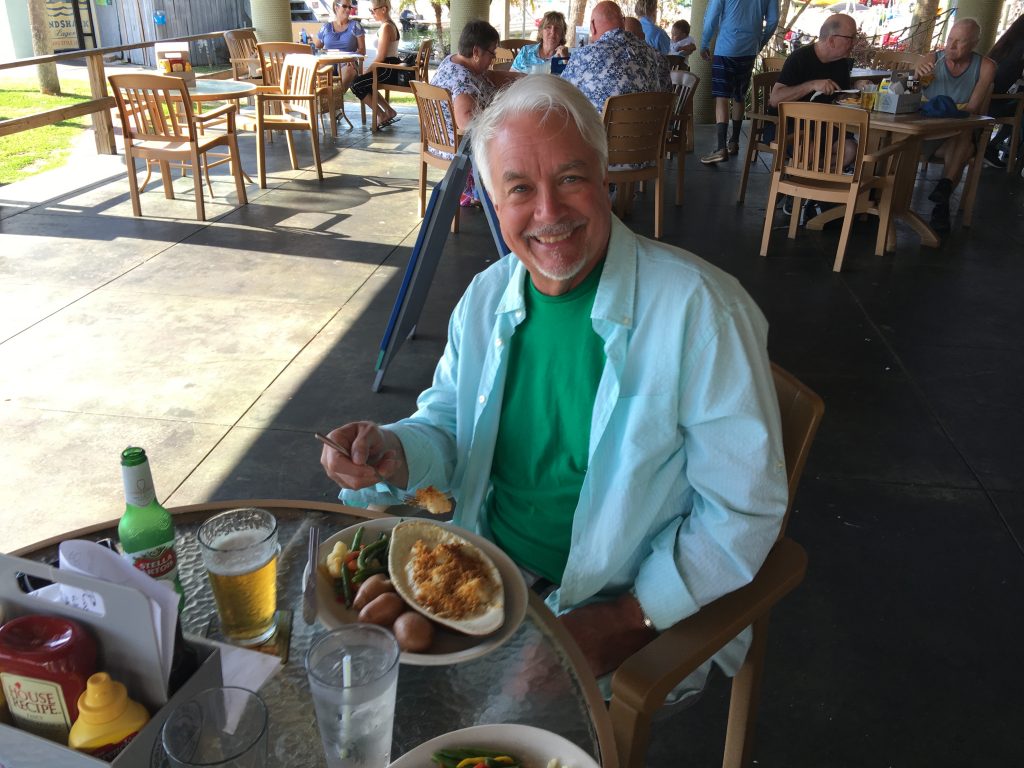
Ahead of us? Two days of driving, which is broken up with a stop in Bureau, Kentucky, which is a dry town. I smuggle my last bottle of beer into our motel room and sigh happily.
